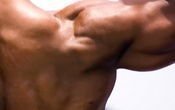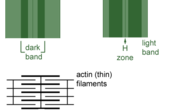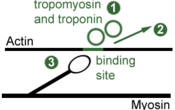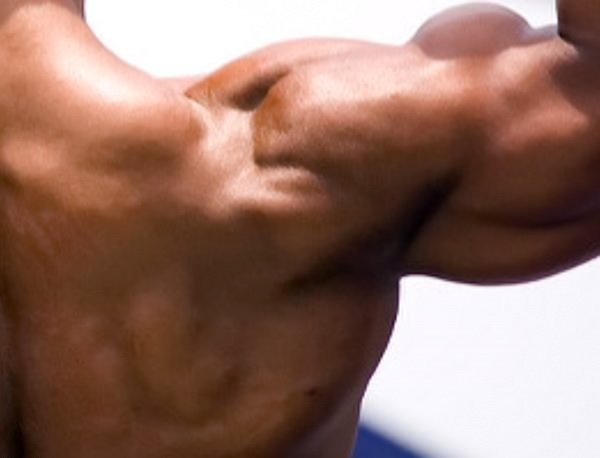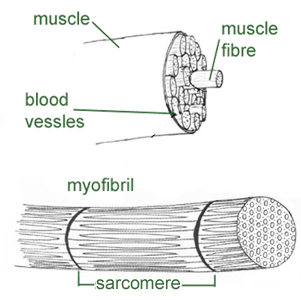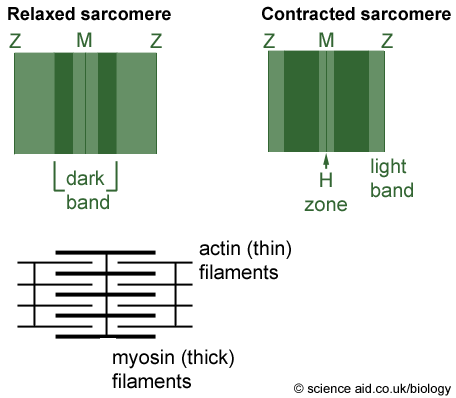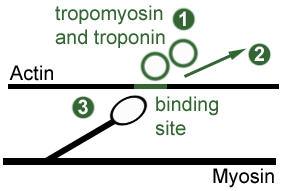Muscles
Edited by Jamie (ScienceAid Editor), Taylor (ScienceAid Editor), Doug Collins
An Overview of Muscle
There are three major types of muscle these are outlined in the table below.
Type Information Striated Muscles Also known as skeletal muscles, these are attached to the bones by tendons and are responsible for controlling your physical movements (walking, talking, dancing). These are controlled by the brain and are voluntary (although maintaining posture is subconscious). Smooth Muscles Are found in the walls of organs such as the oesophagus, bronchi and bladder. They are responsible for peristalsis (involuntary relaxation and contractions). These are under the control of the autonomic nervous system and as such are involuntary. Cardiac Muscle This is a specialized muscle that is only found in the heart. They are myogenic so can contract by themselves, the brain only controls the rate of contraction. Cardiac muscles also don't fatigue: the heart can't stop.
Muscles very often have antagonistic pairs, which means two muscles work together. A good example is the iris, when adjusting the pupil size. The most obvious example in striated muscle are the biceps and triceps. When the arm is moved up the bicep contracts and triceps relax. When the arm is extended the reverse is true and the bicep relaxes and the triceps contracts.
Muscle Structure
Muscles have quite a complicated structure, with a lot of different words to describe all the features. The muscle is made up of muscle fibres, which is itself made up of myofibrils - which consists of actin and myosin proteins.
The sarcomere is a short length of muscle fibre. It has characteristic banding patterns produced by the actin and myosin, depending on what state it's in.
The uppermost pair of diagrams shows the banding that occurs in the sarcomere. The M line is where the thick filaments join and is in the centre of the sarcomere. The Z lines are where the thin filaments are joined and marks the ends of the sarcomere. There are several bands. The dark band spans from the edges of either dark area. In the centre of it, is a lighter area known as the H zone (from Helle, the German for light). Then at the extremities of the sarcomere are the light bands.
The black and white diagram below, shows how the bands occurs as a result of overlapping of filaments. The dark bands are the result of the overlap of actin and myosin. When the sarcomere contracts there is a larger dark band because the actin is moved closer to the centre and more overlap occurs.
Muscle Contractions
A muscle contraction begins with a nervous impulse. The impulse arrives at a neuromuscular junction, and the impulse travels as if leaving a synapse. The acetylcholine binds to the sarcoplasmic reticulum and makes it more permeable to calcium ions.
The calcium binds to a molecule called troponin which is on the actin (step 1 on diagram). This changes its shape so that it will displace tropomyosin (step 2), which leaves the binding site free. The myosin head can now bind with the binding site (step 3) and form a cross bridge. The head pulls backwards which moves the actin along a tiny bit. Now an ATP molecule is used to detach the myosin head and the myosin is said to be 're-cocked': able to bind further along to continue t moving the filaments.
Referencing this Article
If you need to reference this article in your work, you can copy-paste the following depending on your required format:
APA (American Psychological Association)
Muscles. (2017). In ScienceAid. Retrieved Apr 18, 2024, from https://scienceaid.net/biology/humans/muscles.html
MLA (Modern Language Association) "Muscles." ScienceAid, scienceaid.net/biology/humans/muscles.html Accessed 18 Apr 2024.
Chicago / Turabian ScienceAid.net. "Muscles." Accessed Apr 18, 2024. https://scienceaid.net/biology/humans/muscles.html.
If you have problems with any of the steps in this article, please ask a question for more help, or post in the comments section below.
Comments
Article Info
Categories : Humans
Recent edits by: Taylor (ScienceAid Editor), Jamie (ScienceAid Editor)
